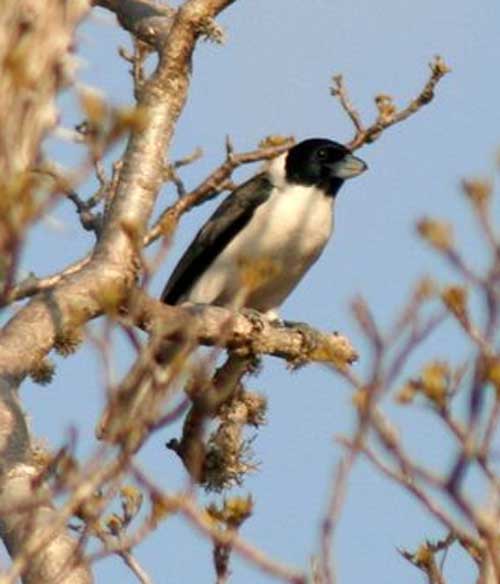
Xenopirostris xenopirostris (*)
Cladus: Eukaryota
Supergroup: Opisthokonta
Regnum: Animalia
Subregnum: Eumetazoa
Cladus: Bilateria
Cladus: Nephrozoa
Cladus: Deuterostomia
Phylum: Chordata
Subphylum: Vertebrata
Infraphylum: Gnathostomata
Superclassis: Tetrapoda
Classis: Aves
Subclassis: Carinatae
Infraclassis: Neornithes
Parvclassis: Neognathae
Ordo: Passeriformes
Subordo: Passeri
Parvordo: Corvida
Superfamilia: Corvoidea
Familia: Vangidae
Genus: Xenopirostris
Species: Xenopirostris xenopirostris
Name
Xenopirostris xenopirostris (Lafresnaye, 1850)
Vernacular names
English: Lafresnaye's Vanga
Français: Vanga de Lafresnaye
Reference
Revue et Magasin de Zoologie Pure et Appliqué (2) 2 p.107 pl.1
The Lafresnaye's Vanga (Xenopirostris xenopirostris) is a species of bird in the Vangidae family. It is endemic to Madagascar.
Its natural habitat is subtropical or tropical dry shrubland.
References
* BirdLife International 2004. Xenopirostris xenopirostris. 2006 IUCN Red List of Threatened Species. Downloaded on 27 July 2007.
Retrieved from "http://en.wikipedia.org/"
All text is available under the terms of the GNU Free Documentation License

